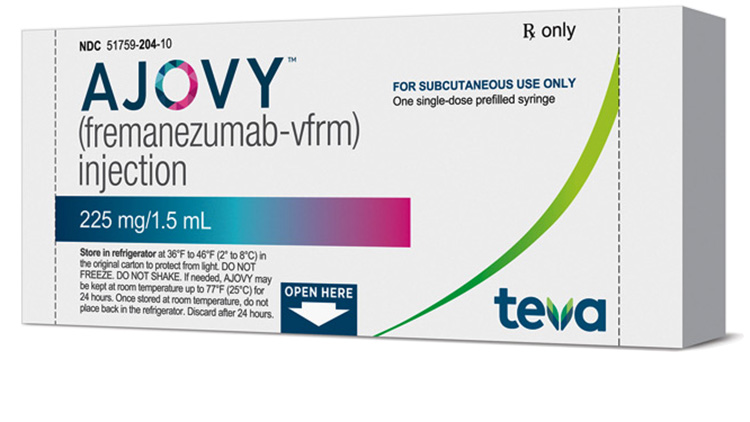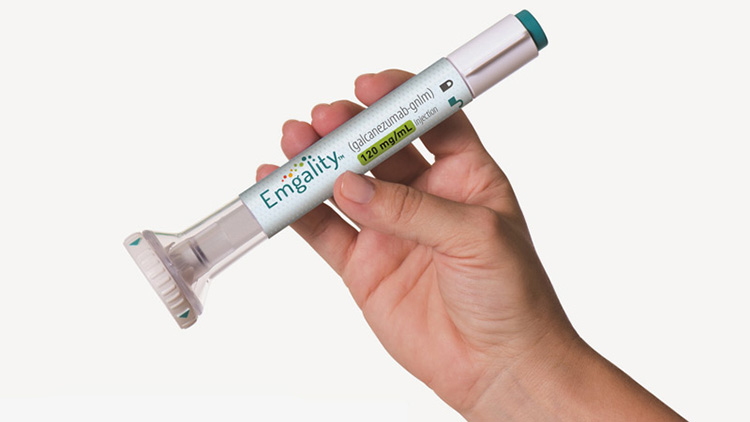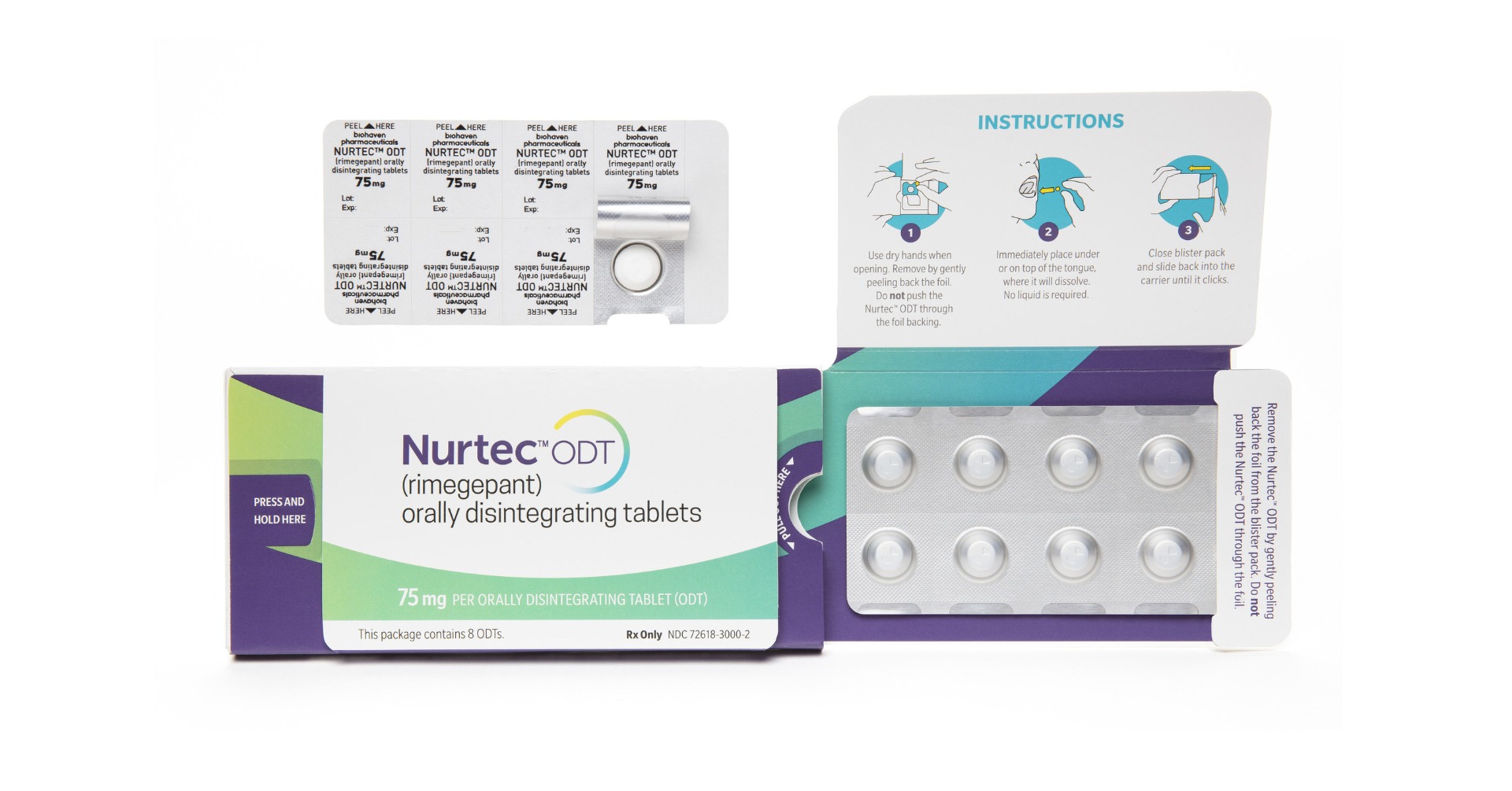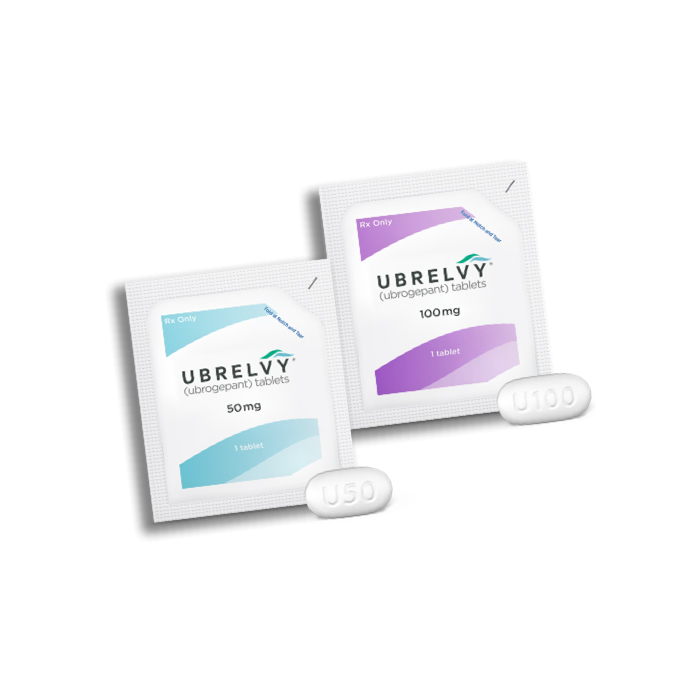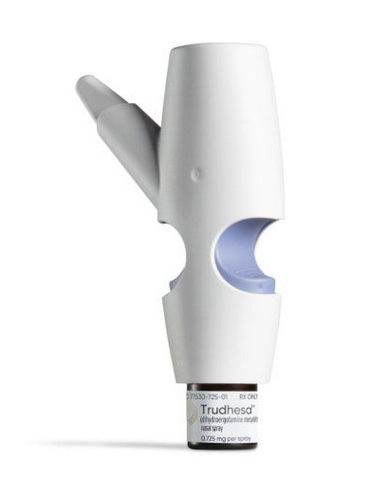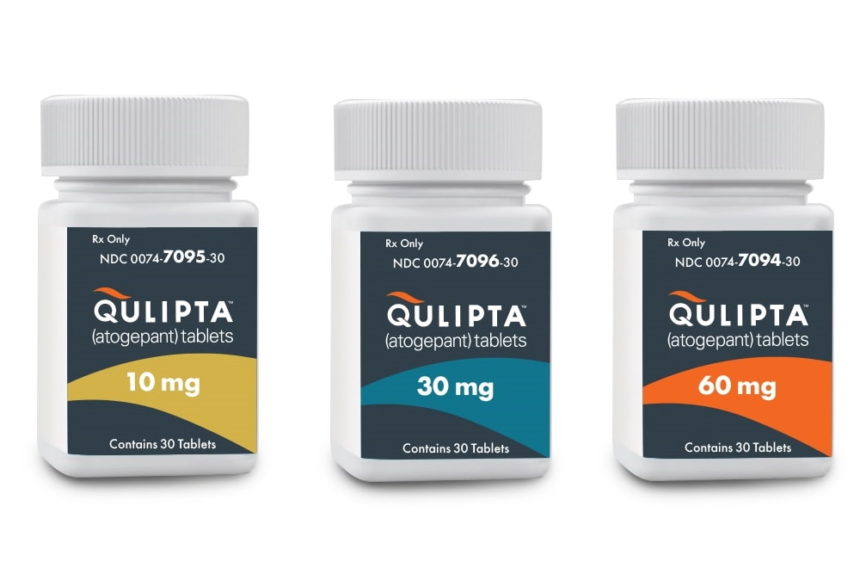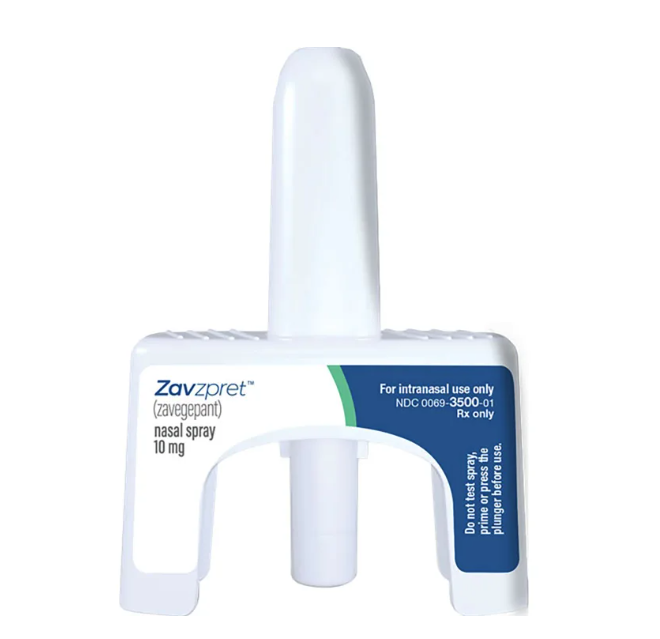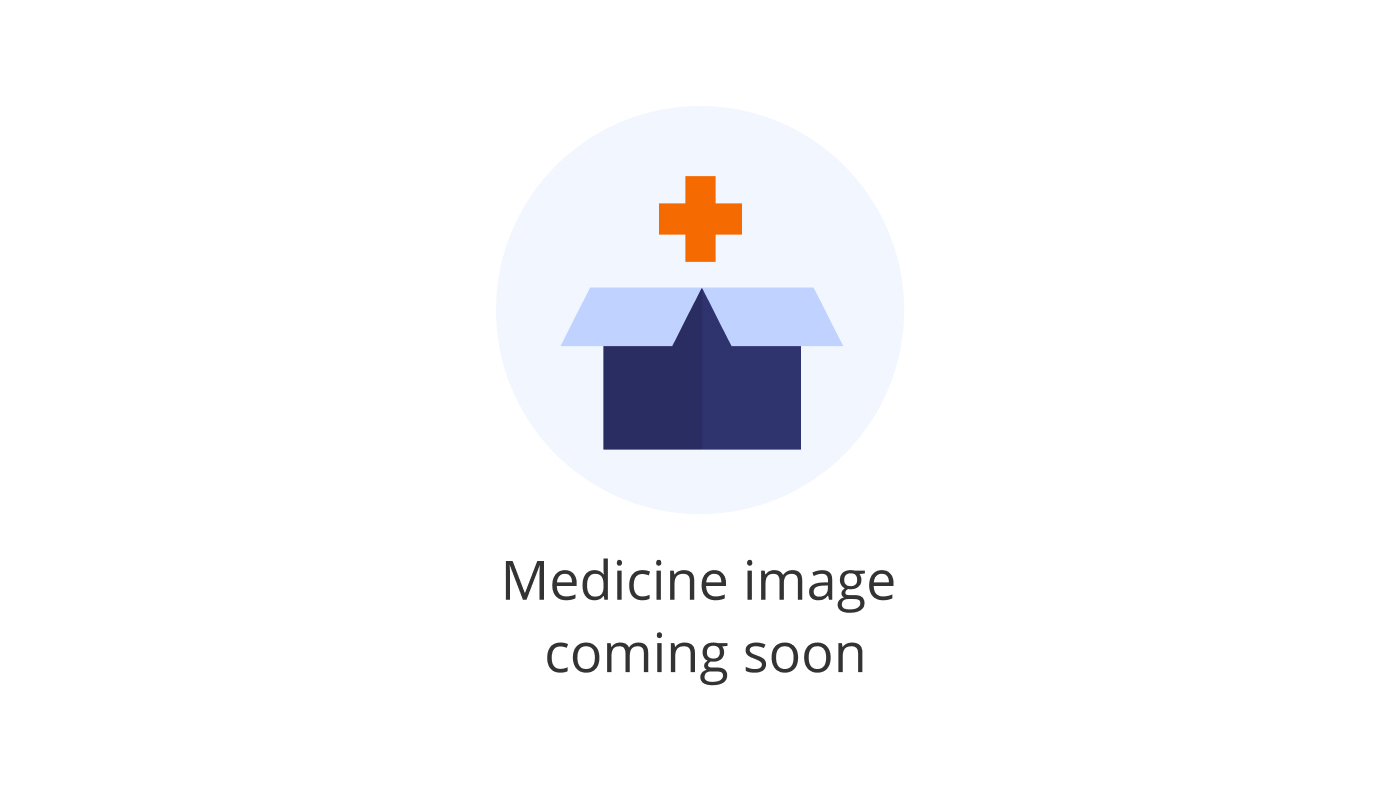New Migraine treatments 2024
New Migraine Treatments 2024
Migraine is a neurological condition characterized by intense, debilitating headaches, often accompanied by nausea, vomiting, and extreme sensitivity to light and sound. These headaches typically present as a throbbing pain on one side of the head, but can also affect both sides or shift from one side to the other. Migraine attacks can last for hours to days, and the pain can be so severe that it interferes with daily activities. Some individuals experience warning symptoms known as aura, which can include visual disturbances, such as flashes of light or blind spots, or other disturbances, such as tingling on one side of the face or in an arm or leg. The exact cause of migraines is still not completely understood, but they are believed to result from abnormal brain activity affecting nerve signals, chemicals, and blood vessels in the brain.
When considering treatment options for migraines, it is important to consult with a healthcare provider to determine the most appropriate approach, which may include acute or preventive medications. Acute treatments are taken at the onset of migraine symptoms and aim to stop or reduce the severity of an attack. These can include over-the-counter pain relievers, such as ibuprofen or aspirin, as well as prescription medications like triptans or ergotamines. Preventive medications are used regularly to reduce the frequency, severity, and length of migraines and may include cardiovascular drugs, antidepressants, anti-seizure drugs, CGRP antagonists, or botulinum toxin type A. Lifestyle changes and complementary therapies, such as stress management, adequate sleep, and acupuncture, can also play a role in managing migraine symptoms.
Treatment options
| Treatment option | Estimated cost | Efficacy | Eligibility |
|---|---|---|---|
| Over-the-counter (OTC) pain relievers | $5 - $20 | Effective for mild to moderate migraines | General use, no prescription needed |
| Triptans (e.g., sumatriptan) | $20 - $300 | Highly effective for acute treatment | Prescription only, not for patients with certain cardiovascular conditions |
| Aimovig | $550 - $700 | Effective for prevention | Prescription only, for chronic migraine sufferers |
| Ajovy | $500 - $650 | Effective for prevention | Prescription only, for chronic migraine sufferers |
| Emgality | $550 - $700 | Effective for prevention | Prescription only, for chronic migraine sufferers |
| Nurtec ODT | $850 - $950 | Effective for acute treatment | Prescription only, not for patients with certain medical conditions |
| Ubrelvy | $850 - $950 | Effective for acute treatment | Prescription only, not for patients with certain medical conditions |
| Trudhesa | $600 - $700 | Effective for acute treatment | Prescription only, not for patients with certain medical conditions |
| Qulipta | $600 - $700 | Effective for prevention | Prescription only, for chronic migraine sufferers |
| Zavzpret (experimental) | Not available | Potential acute treatment, still in clinical trials | Not yet approved, available only in clinical trials |
| Botox injections | $300 - $600 | Effective for chronic migraine prevention | Prescription only, for chronic migraine sufferers |
| Antiepileptic drugs (e.g., topiramate) | $10 - $300 | Varies, can be effective for prevention | Prescription only, not for all patients |
| Beta-blockers (e.g., propranolol) | $4 - $100 | Varies, commonly used for prevention | Prescription only, not for patients with certain conditions |
| Calcium channel blockers (e.g., verapamil) | $4 - $100 | Varies, sometimes used for prevention | Prescription only, not for all patients |
| Antidepressants (e.g., amitriptyline) | $4 - $100 | Varies, sometimes used for prevention | Prescription only, not for all patients |
| CGRP monoclonal antibodies (e.g., Aimovig, Ajovy, Emgality) | $500 - $700 | Effective for prevention | Prescription only, for chronic migraine sufferers |
| Acupuncture | $60 - $120 per session | Varies, some find it helpful for prevention | Available to most individuals, but not covered by all insurance plans |
| Behavioral therapy | $100 - $200 per session | Can be effective as part of a comprehensive treatment plan | Available to most individuals, but not covered by all insurance plans |
Treatments options in detail
Acute Treatment of Migraine
For the acute treatment of migraines, patients often turn to over-the-counter (OTC) pain relievers such as ibuprofen, aspirin, or acetaminophen. In cases where these are ineffective, healthcare providers may prescribe triptans, a class of medications specifically designed to treat migraines. Examples include sumatriptan, rizatriptan, and eletriptan, which work by constricting blood vessels and blocking pain pathways in the brain. Another option for acute treatment is ergotamines, such as ergotamine tartrate and dihydroergotamine (DHE), which are less commonly used due to their side effect profile.
For those who experience nausea and vomiting with their migraines, antiemetic medications like metoclopramide or ondansetron can be prescribed. Additionally, nonsteroidal anti-inflammatory drugs (NSAIDs), either alone or in combination with caffeine or other analgesics, can be effective in treating migraine pain for some patients.
Preventive Treatment of Migraine
Preventive treatment may be recommended for patients who experience frequent or severe migraines. Commonly prescribed preventive medications include beta-blockers (e.g., propranolol, metoprolol), calcium channel blockers (e.g., verapamil), antidepressants (e.g., amitriptyline, nortriptyline), and antiepileptic drugs (e.g., topiramate, valproate). These medications are taken regularly to reduce the frequency, severity, and duration of migraines.
Calcitonin Gene-Related Peptide (CGRP) Monoclonal Antibodies
A newer class of preventive treatments involves monoclonal antibodies that target the calcitonin gene-related peptide (CGRP) pathway, which is believed to play a key role in the pathophysiology of migraines. Aimovig (erenumab) was the first FDA-approved medication in this class, and it works by blocking the CGRP receptor. Ajovy (fremanezumab) and Emgality (galcanezumab) target the CGRP ligand itself. These medications are administered via subcutaneous injections and have been shown to reduce migraine days for patients with chronic and episodic migraines.
Gepants
Gepants are a newer class of oral medications that also target the CGRP pathway but are used for both acute and preventive treatment of migraines. Ubrelvy (ubrogepant) and Nurtec ODT (rimegepant) can be used for the acute treatment of migraine attacks. Nurtec ODT has the additional indication for preventive treatment when used every other day. These medications offer an alternative for patients who do not respond to or cannot take triptans.
Ditans
Another novel acute treatment option for migraines is the ditan class of medications. Reyvow (lasmiditan) is the first FDA-approved ditan, which works by targeting the 5-HT1F serotonin receptor, a different mechanism than that of triptans. It is particularly useful for patients who have contraindications to triptans, such as those with cardiovascular disease.
Neuromodulation Devices
Neuromodulation devices offer a non-pharmacological approach to treating migraines. These devices, such as the Cefaly transcutaneous electrical nerve stimulation unit and the gammaCore vagus nerve stimulator, are used to either prevent migraines or alleviate pain during an attack. They work by delivering electrical or magnetic stimulation to certain nerves associated with migraine pain.
Experimental Treatments
Experimental treatments for migraines are continually being researched. One such treatment is the use of onabotulinumtoxinA (Botox), which is FDA-approved for chronic migraines and involves multiple injections around the head and neck every 12 weeks. Other investigational therapies include the use of psychedelics like psilocybin and LSD in microdoses, which are currently not FDA-approved and require further research to establish their safety and efficacy.
Off-Label and Emerging Treatments
Trudhesa (dihydroergotamine mesylate) is a nasal spray that delivers DHE for the acute treatment of migraine with or without aura. It utilizes a proprietary technology to enhance the delivery of the medication to the upper nasal space, thereby offering rapid relief with a lower systemic exposure. Qulipta (atogepant) is another oral CGRP receptor antagonist recently approved by the FDA for the preventive treatment of episodic migraines.
Zavzpret (zavegepant) is a CGRP receptor antagonist currently under investigation for the acute treatment of migraines. While not yet approved by the FDA, it represents a potential future treatment option that could be available in different formulations, such as a nasal spray.
It is important to note that the choice of treatment for migraines is highly individualized, based on the patient's medical history, the frequency and severity of migraine attacks, and the presence of any comorbid conditions. Patients should consult with their healthcare provider to determine the most appropriate treatment plan for their specific needs.
Furthermore, while some treatments mentioned are not approved by the FDA for the treatment of migraines, they may be used off-label when deemed appropriate by a healthcare provider. Off-label use refers to the use of a medication for an indication not included in the official labeling approved by the FDA, which is a common and legal practice in medicine.
In conclusion, the treatment landscape for migraines is diverse, encompassing a range of pharmacological options, neuromodulation devices, and emerging therapies. As research continues to evolve, new treatments are expected to become available, offering hope for improved management of this debilitating condition.
Symptoms
Most Common Symptoms of Migraine
Migraines are characterized by intense, debilitating headaches that can last for hours to days. The most common symptom of a migraine is a throbbing or pulsing pain, often on one side of the head. This pain can be moderate to severe in intensity and can significantly interfere with a person's daily activities.
In addition to pain, migraines are often accompanied by sensitivity to light (photophobia) and sound (phonophobia). Many individuals find that they must rest in a dark, quiet room during a migraine episode to alleviate these sensitivities. Nausea and vomiting are also common symptoms, which can further contribute to the inability to perform routine tasks.
Aura is another symptom experienced by some individuals with migraines. Aura refers to a range of neurological disturbances that can occur before or during a migraine. These can include visual phenomena such as seeing various shapes, bright spots, or flashes of light. Some people might also experience vision loss or changes in their field of vision.
Non-visual auras can also occur, manifesting as tingling sensations on one side of the face or in an arm or leg, difficulty speaking, or hearing noises. The aura typically lasts for 20 to 60 minutes and is followed by the headache phase of the migraine in most cases.
Other Symptoms Associated with Migraine
Some individuals with migraines may experience prodrome symptoms, which can occur hours or days before the headache begins. These early warning signs can include mood changes, such as depression or euphoria, food cravings, neck stiffness, increased thirst and urination, and frequent yawning.
During a migraine, some individuals might also experience dizziness or a feeling of spinning (vertigo), as well as cognitive disturbances, which can make it difficult to concentrate or process information. Others may feel extremely fatigued or weak, even if they have not engaged in any strenuous activity.
Postdrome, the phase following the end of the migraine headache, can leave individuals feeling drained, confused, and washed out for up to a day. Some people report feeling unusually refreshed or euphoric after a migraine, although this is less common.
Less Common Symptoms
While less common, some individuals may experience additional symptoms during a migraine. These can include nasal congestion and runny nose, which can mimic sinus headache symptoms, as well as watery eyes and sweating. Facial pain and pressure are also possible but less typical symptoms of migraine.
In rare cases, migraines can trigger more serious neurological symptoms, such as weakness or numbness in the face or one side of the body, which can mimic the symptoms of a stroke. These symptoms require immediate medical attention to rule out other serious conditions.
Symptoms in Children
Migraine symptoms in children may differ somewhat from those in adults. Children's migraines often have a shorter duration, and the pain may be less intense or affect both sides of the head. Abdominal pain, gastrointestinal symptoms, and mood changes can be more pronounced in children with migraines.
Additionally, children may exhibit pallor, look pale, and have dark circles under their eyes. They may also be more prone to motion sickness and dizziness. In some cases, children may experience what is known as a cyclical vomiting syndrome, which is characterized by episodes of severe vomiting that can be related to migraines.
Chronic Migraine Symptoms
Chronic migraine is defined as having headaches on 15 or more days per month for more than three months, with at least eight of those headache days being migrainous in nature. Individuals with chronic migraines may experience the same symptoms as those with episodic migraines, but the frequency and sometimes the intensity can lead to a significant impact on quality of life.
Due to the high frequency of headache days, individuals with chronic migraines may also experience symptoms of overuse of headache medications, which can include rebound headaches and gastrointestinal disturbances.
Triggers and Aggravating Factors
While not symptoms per se, it is important to note that migraines can be triggered or aggravated by various factors. Common triggers include stress, hormonal changes in women, certain foods and additives, strong sensory stimuli, changes in sleep patterns, physical exertion, changes in the weather, and medications. Identifying and managing these triggers can be an important part of migraine treatment and symptom management.
Understanding the range of symptoms associated with migraines is crucial for proper diagnosis and treatment. Since migraines can manifest differently in individuals, a detailed history and description of symptoms are essential for healthcare providers to tailor an effective treatment plan.
Cure
Understanding the Cure for Migraine
Currently, there is no cure for migraine. Migraine is a complex neurological condition characterized by recurrent episodes of headache, often accompanied by other symptoms such as nausea, vomiting, and sensitivity to light and sound. While the exact cause of migraines is not fully understood, they are thought to be the result of abnormal brain activity affecting nerve signals, chemicals, and blood vessels in the brain.
Treatment Approaches for Migraine Management
Although a cure for migraine remains elusive, there are various treatment strategies aimed at reducing the frequency, severity, and duration of migraine attacks. These treatments can be broadly categorized into acute and preventive therapies.
Acute Treatments for Migraine
Acute treatments are taken at the onset of migraine symptoms to alleviate the pain and other associated symptoms. These include over-the-counter (OTC) pain relievers such as ibuprofen, aspirin, and acetaminophen, as well as prescription medications including triptans (such as sumatriptan and rizatriptan), ergotamines, and anti-nausea drugs. While these medications can be effective for symptom relief, they do not cure migraine and can sometimes lead to medication overuse headaches if used too frequently.
Preventive Treatments for Migraine
Preventive treatments are used to reduce the frequency, severity, and length of migraine episodes. These can include prescription medications such as beta-blockers (e.g., propranolol), antidepressants (e.g., amitriptyline), antiepileptic drugs (e.g., topiramate), and calcitonin gene-related peptide (CGRP) inhibitors (e.g., erenumab). Additionally, lifestyle changes and alternative therapies such as stress management, regular exercise, and acupuncture may also help prevent migraines.
Off-Label Use of Medications for Migraine
Some medications are used off-label for the treatment of migraine, meaning they are not specifically approved for migraine but have shown efficacy in some patients. Examples include certain antihypertensive medications, antihistamines, and antipsychotics. The use of off-label medications is based on individual patient needs and physician discretion, and it is important for patients to be closely monitored for efficacy and side effects.
Emerging Therapies and Research
Research into the pathophysiology of migraine continues to yield new insights, which in turn lead to the development of novel therapies. For example, monoclonal antibodies targeting CGRP or its receptor have emerged as a new class of preventive treatments for chronic and episodic migraines. Devices that provide neuromodulation, such as transcranial magnetic stimulation (TMS) and vagus nerve stimulation (VNS), are also being explored as potential treatments.
Personalized Medicine in Migraine Treatment
Personalized medicine, which tailors treatment to the individual characteristics of each patient, is becoming increasingly important in the management of migraine. Genetic factors, biomarkers, and response to previous treatments are some of the factors that can guide the choice of therapy. This personalized approach aims to improve treatment outcomes and reduce the trial-and-error process often associated with finding an effective migraine treatment.
Lifestyle Modifications and Complementary Therapies
In addition to medication, lifestyle modifications can play a significant role in managing migraine. Identifying and avoiding triggers, such as certain foods, stress, or changes in sleep patterns, is crucial. Complementary therapies, including biofeedback, cognitive-behavioral therapy, and relaxation techniques, may also provide benefit and improve quality of life for those with migraines.
Conclusion on Migraine Cure
In conclusion, while there is no cure for migraine, a combination of acute and preventive treatments, lifestyle changes, and possibly complementary therapies can help manage the condition effectively. Ongoing research continues to explore new potential treatments, with the hope of one day finding a cure. Patients with migraine should work closely with their healthcare providers to develop a comprehensive treatment plan tailored to their specific needs.
Access Migraine medicines today
If Migraine medicines are not approved or available in your country (e.g. due to supply issues), you can access them via Everyone.org.
How Everyone.org works

Make an enquiry
Choose the medicine you want to access, answer a couple of questions, and upload your prescription to speed things up. We’ll get back to you within 24 hours.


Make an enquiry
Choose the medicine you want to access, answer a couple of questions, and upload your prescription to speed things up. We’ll get back to you within 24 hours.


Breeze through the paperwork
We'll guide you through the required documents for importing unapproved medicine, ensuring you have all the necessary information.


Get a personalized quote
We’ll prepare a quote for you, including medicine costs and any shipping, administrative, or import fees that may apply.


Receive your medicine
Accept the quote and we’ll handle the rest - sourcing and safely delivering your medicine.

Some text on this page has been automatically generated. Speak to your physician before you start a new treatment or medication.
Let's talk
If you have any questions, call us or send us a message through WhatsApp or email:
Contact us


